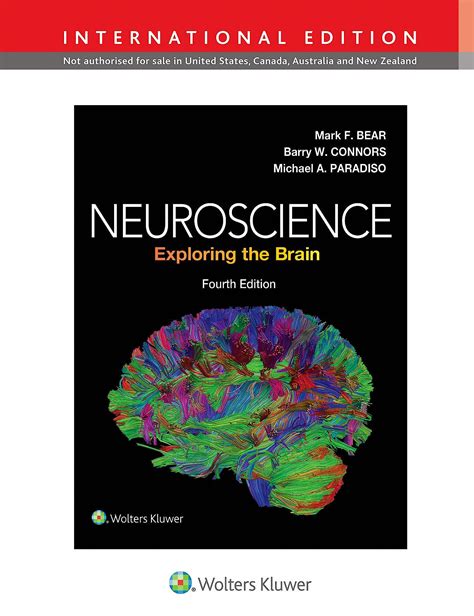The human brain is one of the most complex and mysterious organs in the human body. Understanding how the brain functions and processes information has been a long-standing fascination for scientists and researchers around the world. This blog post will explore the field of neuroscience research, delving into various subtopics such as the structure and function of the human brain, techniques and methods used in neuroscience research, neural communication and signaling, neural development and plasticity, cognitive processes and functions, as well as the role of genes and genetic factors in brain function. Additionally, we will also discuss the investigation of neurological disorders and diseases, the advancements and breakthroughs in neuroscience research, and the impact of neuroscience on society. Join us on this journey as we uncover the complexities of the human brain and the exciting prospects for the future in the field of neuroscience.
Table of Contents
Introduction to the Field of Neuroscience
Neuroscience is a multidisciplinary field that explores the structure and function of the human brain and nervous system. It encompasses various scientific disciplines, such as biology, psychology, and biochemistry, to understand the complex mechanisms that underlie human behavior, cognition, and neurological disorders.
Neuroscience research utilizes a wide array of techniques and methods, including brain imaging, electrophysiology, and molecular biology, to investigate neural communication, signaling, development, and plasticity. These studies provide insights into cognitive processes and functions, as well as the role of genes and genetic factors in brain function.
The field of neuroscience has made significant advancements and breakthroughs that have contributed to a better understanding of neurological disorders and diseases. This knowledge has also had a profound impact on society, leading to innovative treatments and therapies for conditions such as Alzheimer’s disease, Parkinson’s disease, and depression.
As neuroscience continues to evolve, it offers exciting prospects for the future, including the potential for further breakthroughs, advancements in technology, and a deeper understanding of the brain’s complexities and its impact on society.
The Structure and Function of the Human Brain
The human brain is an incredibly complex and fascinating organ that plays a crucial role in our overall health and well-being. Its structure consists of billions of neurons that are responsible for transmitting signals and controlling various bodily functions.
One of the most vital parts of the brain is the cerebral cortex, which is divided into four lobes: frontal, parietal, temporal, and occipital. Each lobe is responsible for different functions such as motor control, sensory perception, auditory processing, and visual processing.
Furthermore, the brain is also divided into two hemispheres, each with its own unique functions. The left hemisphere is typically associated with language, logic, and analytical thinking, while the right hemisphere is associated with creativity, intuition, and spatial awareness.
Overall, the brain is an incredibly intricate organ that is essential for our everyday functioning and overall quality of life.
Techniques and Methods Used in Neuroscience Research
When it comes to studying the complex workings of the brain and nervous system, scientists rely on a variety of techniques and methods to gather data and draw conclusions. One of the most common tools used in neuroscience research is neuroimaging, which allows researchers to visualize the structure and function of the brain. Techniques such as magnetic resonance imaging (MRI) and positron emission tomography (PET) provide valuable insights into the inner workings of the brain, shedding light on neural connections, activity patterns, and potential abnormalities.
In addition to neuroimaging, another key method used in neuroscience research is electrophysiology. This involves recording and analyzing the electrical activity of neurons and neural circuits, providing crucial information about how the brain processes and transmits information. Methods such as electroencephalography (EEG) and single-cell recordings offer valuable insights into the dynamics of neural communication and signaling.
Furthermore, behavioral testing is another essential technique employed in neuroscience research. By observing the behavioral responses of humans and animals, researchers can gain a deeper understanding of cognitive processes, emotions, and sensory perception. This method allows scientists to investigate the effects of various stimuli on neural activity and behavior, providing valuable data for studying the brain.
Lastly, advancements in genetic editing technologies have revolutionized neuroscience research. By manipulating the genes of model organisms such as mice, researchers can investigate the role of specific genes and genetic factors in brain function and development. Techniques like CRISPR-Cas9 have opened up new possibilities for understanding the genetic underpinnings of neurological disorders and diseases.
Investigating Neural Communication and Signaling
Neural communication and signaling are essential processes in the functioning of the human brain. Understanding how neurons communicate with each other and how signals are transmitted is crucial in unraveling the mysteries of the brain.
Neuroscientists utilize a variety of techniques and methods to investigate neural communication and signaling. These include electrophysiology, imaging techniques such as fMRI and PET scans, and molecular and genetic approaches. These methods allow researchers to observe and manipulate neural activity, leading to a deeper understanding of the intricate processes involved in communication and signaling within the brain.
Investigating neural communication and signaling also involves studying neurotransmitters, the chemical messengers that transmit signals between neurons. The role of neurotransmitters in various brain functions and behaviors is a major focus of research in neuroscience. Understanding the mechanisms underlying neurotransmitter release, reception, and reuptake is crucial in elucidating the complexities of neural communication and signaling.
Furthermore, research in this area extends to investigating how disruptions in neural communication and signaling contribute to neurological disorders and diseases. Conditions such as Parkinson’s disease, Alzheimer’s disease, and schizophrenia are linked to abnormalities in neural communication and signaling pathways. By delving into these disruptions, neuroscientists aim to develop strategies for intervention and treatment.
Exploring Neural Development and Plasticity
Neural development and plasticity refer to the ability of the nervous system to grow, change, and adapt over time. This process is crucial for the formation of new connections between neurons, the establishment of neural circuits, and the overall organization of the brain.
Understanding neural development and plasticity is essential for gaining insights into how the brain functions and responds to various stimuli. It plays a significant role in learning, memory, and recovery from injuries or diseases that affect the nervous system.
Researchers use various techniques and methods, such as neuroimaging, electrophysiology, and molecular biology, to investigate the mechanisms underlying neural development and plasticity. These studies provide valuable information about the cellular and molecular processes involved in shaping the brain’s structure and function.
Furthermore, exploring neural development and plasticity also sheds light on the potential for neuroplasticity-based therapies that could be used to promote recovery and rehabilitation in individuals with neurological conditions or injuries.
Understanding Cognitive Processes and Functions
Cognitive processes and functions are essential for human functioning and behavior. These processes include memory, attention, perception, language, problem-solving, decision-making, and reasoning. Understanding how these processes work and how they are interconnected is crucial in the field of neuroscience.
Researchers in neuroscience are constantly seeking to unravel the complexities of cognitive functions and the underlying processes in the brain. They use various techniques and methods such as neuroimaging, electrophysiology, and neuropsychological studies to investigate how the brain enables cognition.
By studying cognitive processes, neuroscientists aim to gain insights into neurological and psychiatric disorders that affect cognition, such as Alzheimer’s disease, schizophrenia, and attention deficit hyperactivity disorder (ADHD). Understanding the neural basis of cognitive processes is crucial for developing interventions and treatments for these conditions.
Furthermore, the advancements and breakthroughs in neuroscience research have significantly expanded our understanding of cognitive processes and functions. New technologies and research findings continue to provide valuable information about how the brain supports cognition and behavior, paving the way for potential applications in education, rehabilitation, and neurotechnology.
The Role of Genes and Genetic Factors in Brain Function
Genes and genetic factors play a crucial role in determining the function and development of the brain. These genetic components provide the blueprint for the formation of the brain and its intricate network of neurons. They dictate the production of proteins, neurotransmitters, and other molecules essential for the structure and function of the brain.
Furthermore, gene expression patterns can influence the susceptibility to neurological disorders and diseases. Variations in gene sequences and mutations can lead to altered brain function and predisposition to conditions such as Alzheimer’s disease, Parkinson’s disease, and schizophrenia.
Research in neuroscience has focused on identifying specific genetic markers associated with brain function and dysfunction. The utilization of advanced techniques such as genome-wide association studies has allowed scientists to pinpoint genes that contribute to cognitive processes, emotional regulation, and overall brain health.
Understanding the role of genes and genetic factors in brain function is pivotal for unraveling the complexities of the human brain and finding potential targets for therapeutic interventions in neurological disorders. With ongoing advancements in neuroscience research, the impact of genetic influences on the brain is becoming increasingly apparent, offering new paths for the development of personalized medicine and innovative treatments.
Investigating Neurological Disorders and Diseases
Neurological disorders and diseases are complex and often debilitating conditions that affect the nervous system, including the brain, spinal cord, and nerves. Researchers and scientists are constantly working to investigate and understand the underlying causes, mechanisms, and potential treatments for these conditions.
One of the key areas of focus in investigating neurological disorders and diseases is understanding the role of genes and genetic factors in the development and progression of these conditions. Advances in genomic research have provided valuable insights into the genetic basis of many neurological disorders, paving the way for targeted therapies and personalized medicine approaches.
Another critical aspect of research in this field involves the exploration of neural development and plasticity, and how disruptions in these processes can contribute to the onset of neurological disorders. This research often involves studying animal models, cellular and molecular biology techniques, and advanced imaging technologies to gain a deeper understanding of the intricate workings of the nervous system.
Furthermore, investigating neurological disorders and diseases also involves evaluating the impact of various environmental factors, such as toxins, pollutants, and lifestyle choices, on brain health and function. Epidemiological studies and clinical trials play a crucial role in identifying potential risk factors and developing preventive measures to reduce the incidence and burden of these conditions.
Advancements and Breakthroughs in Neuroscience Research
Over the years, there have been significant advancements and breakthroughs in the field of neuroscience research. Scientists and researchers have been able to make tremendous progress in understanding the complexities of the human brain and the nervous system. These breakthroughs have paved the way for new discoveries and insights into neurological disorders and diseases, as well as cognitive processes and functions.
One of the key advancements in neuroscience research is the development and utilization of advanced imaging techniques such as magnetic resonance imaging (MRI) and positron emission tomography (PET). These imaging technologies have allowed researchers to visualize and map the structure and activity of the human brain with unprecedented detail, leading to a better understanding of brain function and neural communication.
Another significant breakthrough in neuroscience research is the advent of optogenetics, a technique that enables researchers to control neural activity using light. This groundbreaking method has revolutionized the study of neural circuits and has the potential to uncover new treatments for neurological disorders such as Parkinson’s disease and Alzheimer’s disease.
Furthermore, advancements in neurogenetics and gene editing technology have allowed researchers to explore the role of genes and genetic factors in brain function and cognitive processes. This has led to a deeper understanding of neurological disorders at the molecular level and has opened up new pathways for the development of targeted therapies.
The Impact of Neuroscience on Society and Future Prospects
Neuroscience, the study of the nervous system and the brain, has had a profound impact on society in recent decades. Through advancements in technology and research, neuroscience has provided insight into the inner workings of the human brain, leading to a better understanding of neurological disorders and mental health conditions.
Furthermore, the field of neuroscience has opened doors for the development of new treatments and therapies, offering hope to individuals suffering from conditions such as Alzheimer’s, Parkinson’s, and depression. As our understanding of the brain continues to expand, the potential for breakthroughs in treatment options grows, potentially improving the lives of millions worldwide.
Neuroscience has also impacted society through its influence on technology and artificial intelligence. The study of the brain has contributed to the development of neural networks and machine learning algorithms, leading to advancements in fields such as robotics, autonomous vehicles, and medical diagnostics.
Looking ahead, the future prospects of neuroscience and its impact on society are vast. With ongoing research and investment in the field, we can anticipate continued breakthroughs in neurological treatments, enhancements in brain-computer interface technology, and new insights into the relationship between the brain and behavior. Ultimately, the impact of neuroscience on society and future prospects is one of promise and potential for the betterment of humankind.





